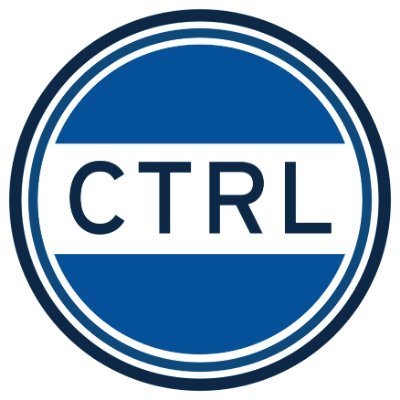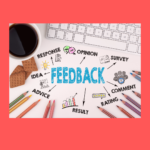HyFlex Learning: Supporting Students and Sustaining Learning Across In-Person & Remote Modalities
By Ericka Menchen-Trevino
In fall 2021, I designed my courses with a “HyFlex” modality. According to the Center for Teaching and Learning at Columbia University, “HyFlex” combines the terms “hybrid” (the integration of synchronous and asynchronous learning for the purpose of reaching learning outcomes) and “flexible” (student choice in class participation and course engagement through the most appropriate modality). A HyFlex class makes class meetings and materials more accessible to all students, and regardless of the path taken, students will achieve the same learning objectives. In my design, synchronous learning (in-person or remote) was the primary focus, with a recording of the synchronous session available asynchronously.
Why use the HyFlex model when we were able to provide the in-person learning experience students and professors alike missed during the pandemic? It seemed wise to encourage students with the first hint of COVID symptoms to stay home, but if students really isolated at the first sign of a headache or cough, it could impact their ability to meet the course learning outcomes. Getting the notes from another student is not a true substitute for attending class, but attending remotely could be the closest option. The courses I was teaching in the Fall were ones I had taught successfully remote, so I believed it was worth trying. I did not change the in-person modality of the course; rather, I simply offered students more options to engage with the course when they needed them.
Offering my course HyFlex involved challenges managing Zoom and in-person interactive learning simultaneously. Managing the technology so that both in-person and remote students can have a positive and interactive experience requires on-the-spot technology troubleshooting that made me appreciate my previous job experience in tech support. The support required to scale this approach would involve a long-term investment, but the learning and the equity benefits may be significant for those willing to troubleshoot technology issues on the spot and find creative solutions to involve students across modalities.
“A HyFlex class makes class meetings and materials more accessible to all students, and regardless of the path taken, students will achieve the same learning objectives”
In applying a HyFlex modality, I went beyond offering the option for students to attend class sessions remotely. If students are sick with COVID or any other illness, they may need to rest and therefore would not be able to attend synchronously. So, by choosing the option to automatically record the Zoom, I offered students an asynchronous option to catch up on the material they missed. I also allowed in-class activities to be submitted asynchronously (within 1 week), and the videos were automatically transcribed and available to students with a searchable interactive transcript1. By doing so, I provided a meaningful learning experience for students who needed to miss a class.
An example of an in-class activity that adapts well to a HyFlex format is the exit ticket where students are asked to reflect on the course material, usually in the last minutes of class. Reading the responses can highlight course concepts that may need to be reinforced. In my courses, this is a pass/fail assignment and I dedicate the last 10 minutes of a class to completing it. Students who attend in person could write the response on paper, but I have found that my students tend to prefer typing, so submitting on Canvas is possible for all modalities.
While circumstances related to sickness or a need to quarantine were the primary motivations for my planning HyFlex options before the semester began, there were many other situations that arose during the semester that were addressed by these options being in place, such as the growing mental health challenges that students faced. A recent report found that 39% of college students were experiencing depression, 34% had anxiety, and 13% had serious thoughts of suicide (Eisenberg et al., 2020). When I asked my students to send me their thoughts about HyFlex learning, several disclosed mental health struggles and said that HyFlex options eased their stress. Even if they did not choose to attend online, the fact that they could was relieving to them. For example, one student wrote:
While I find in-person classes to overall be more effective in learning, HyFlex learning still helps alleviate stress, which is extremely important during these times. Not just during COVID-19, but also for college in general… Most students want to learn, that’s why we are here. Many of us will still attend the courses in person.
Pragmatic issues such as car and transit trouble also arose. Similarly, issues with air travel may be about cost, rather than poor planning. These circumstances helped highlight the potential equity advantages of HyFlex learning since these problems are more likely to impact lower-income students and students of color.
Participation in class, counting in-person, on Zoom, and via video within 1 week, was quite good overall. On average, in classes of approximately 15 students, 1-3 students attended synchronously on Zoom and 0-2 watched the videos asynchronously. From my perspective, providing the HyFlex options resulted in students being more engaged with the course. Further, the videos were not just useful to those who did not attend, but also provided a way to study and review. One student mentioned, “sometimes I do not want to ask a question to the professor that she already discussed in the class, but I missed this part during class. The Zoom recording is a good choice for me to find the answer.”
Overall, I believe applying a HyFlex model to my teaching in Fall 2021 created a more equitable learning experience for all students that prioritized health and safety while still supporting students to achieve the course learning outcomes. I encourage other instructors to think about how they can expand their options for learning to be responsive to our current context.
HyFlex Compatible In-class Activity Example: Exit Ticket
Prompt:
Knew. Write 1-3 sentences about what you knew about any of the topics covered in this class before you came to class. The experience could come from a prior class you have taken or another life experience.
Learned. Write 1-3 sentences about what you learned from the class.
Want to Know. Write 1-3 sentences about what you still want to know about one of the topics covered in class.
Learning Objectives:
1) Students reflect on their own learning process.
2) Students integrate course content into long term memory through focused attention.
Author Bio
Ericka Menchen-Trevino, Ph.D. is an assistant professor in the School of Communication. Her research and teaching interests lie at the intersection of political communication and digital media studies, with a focus on methodology.
References
Eisenberg, D., Ketchen Lipson, S., & Heinze, J. (2020). The healthy minds study: Fall 2020 data report. University of Michigan. https://healthymindsnetwork.org/wp-content/uploads/2021/02/HMS-Fall-2020-National-Data-Report.pdf
Additional Resource
This mix of in-person and online experiences is also being attempted for conferences. For an example, see e-Learning & Innovative Pedagogies (https://ubi-learn.com/2022-conference/format) conference. Attending a blended conference may be a way to experiment with a HyFlex/blended modality before implementing it in a course.



